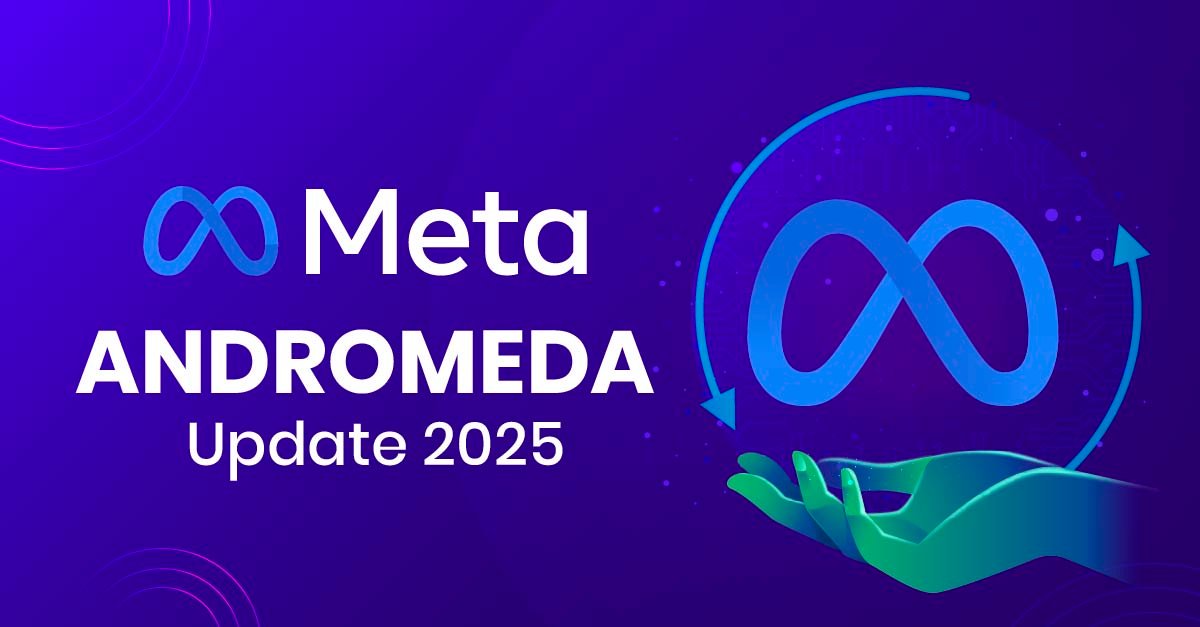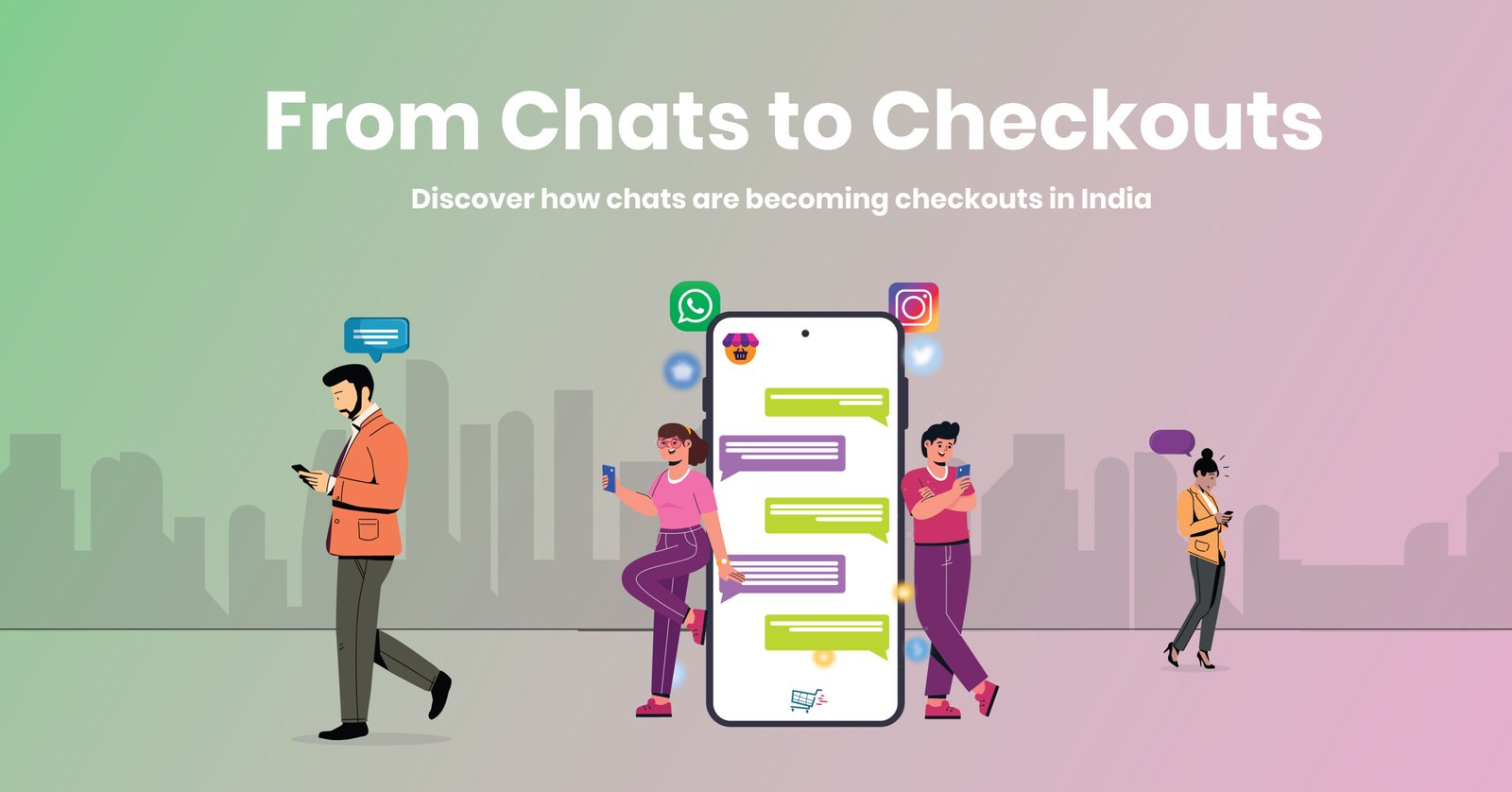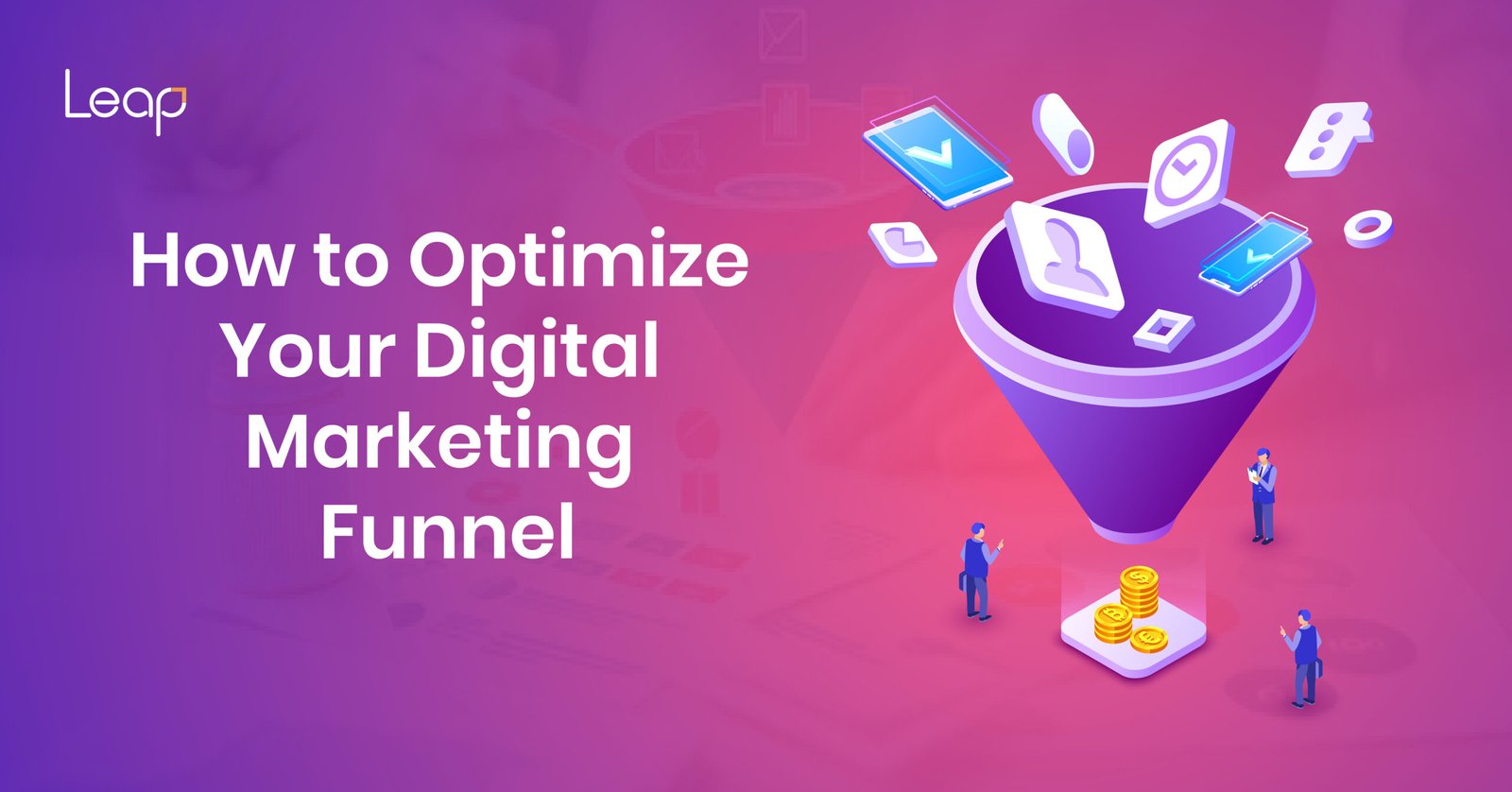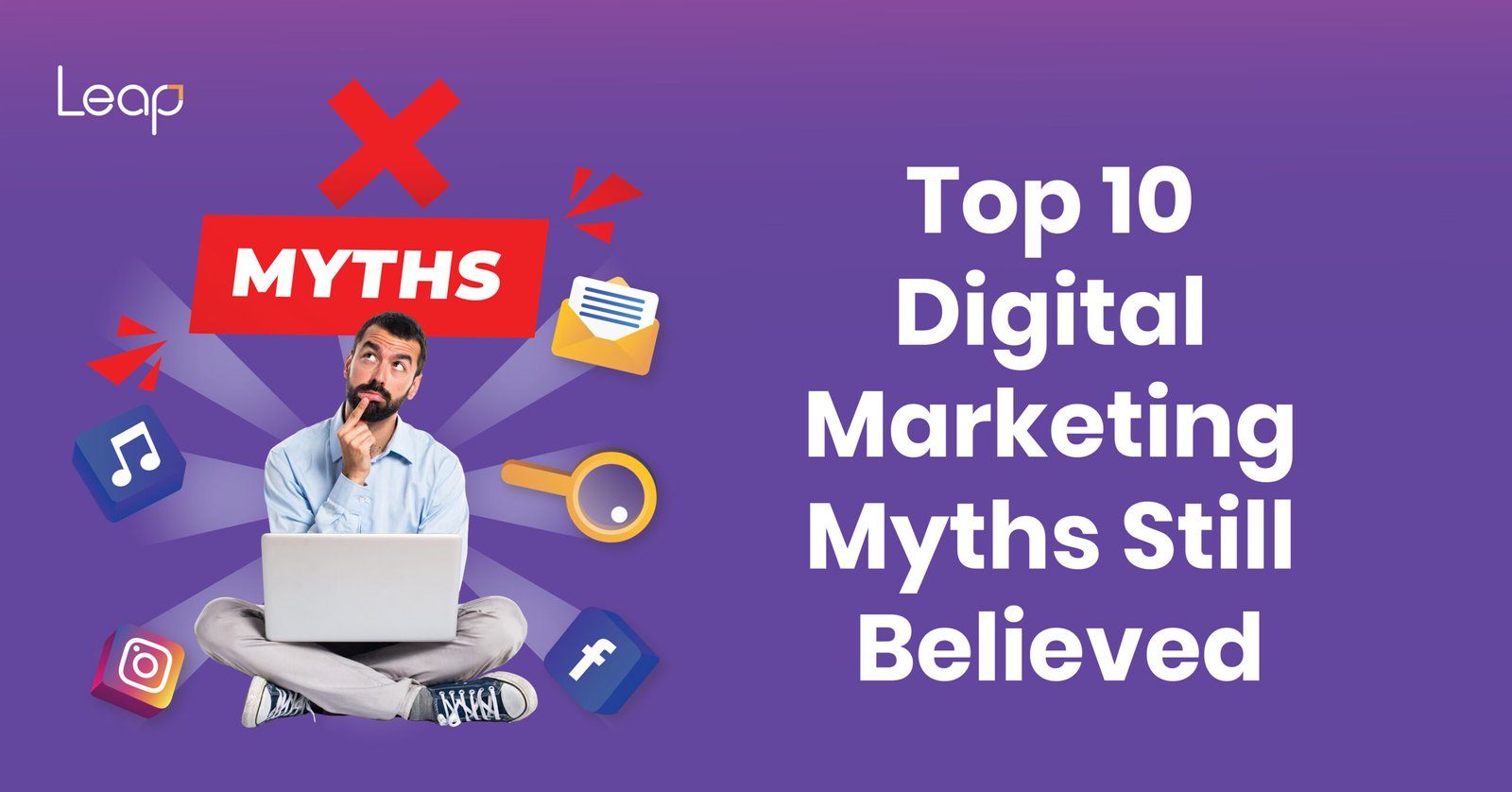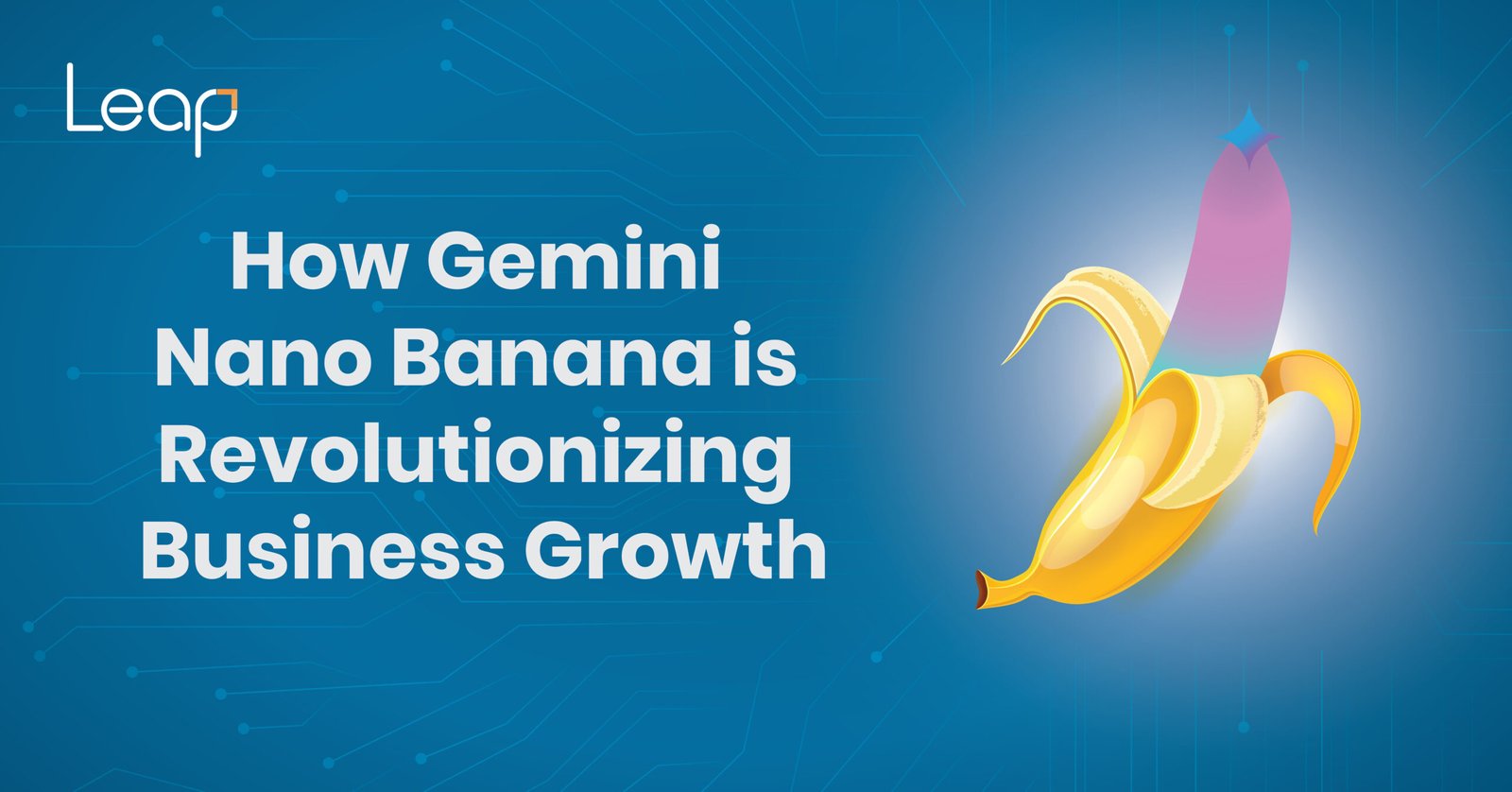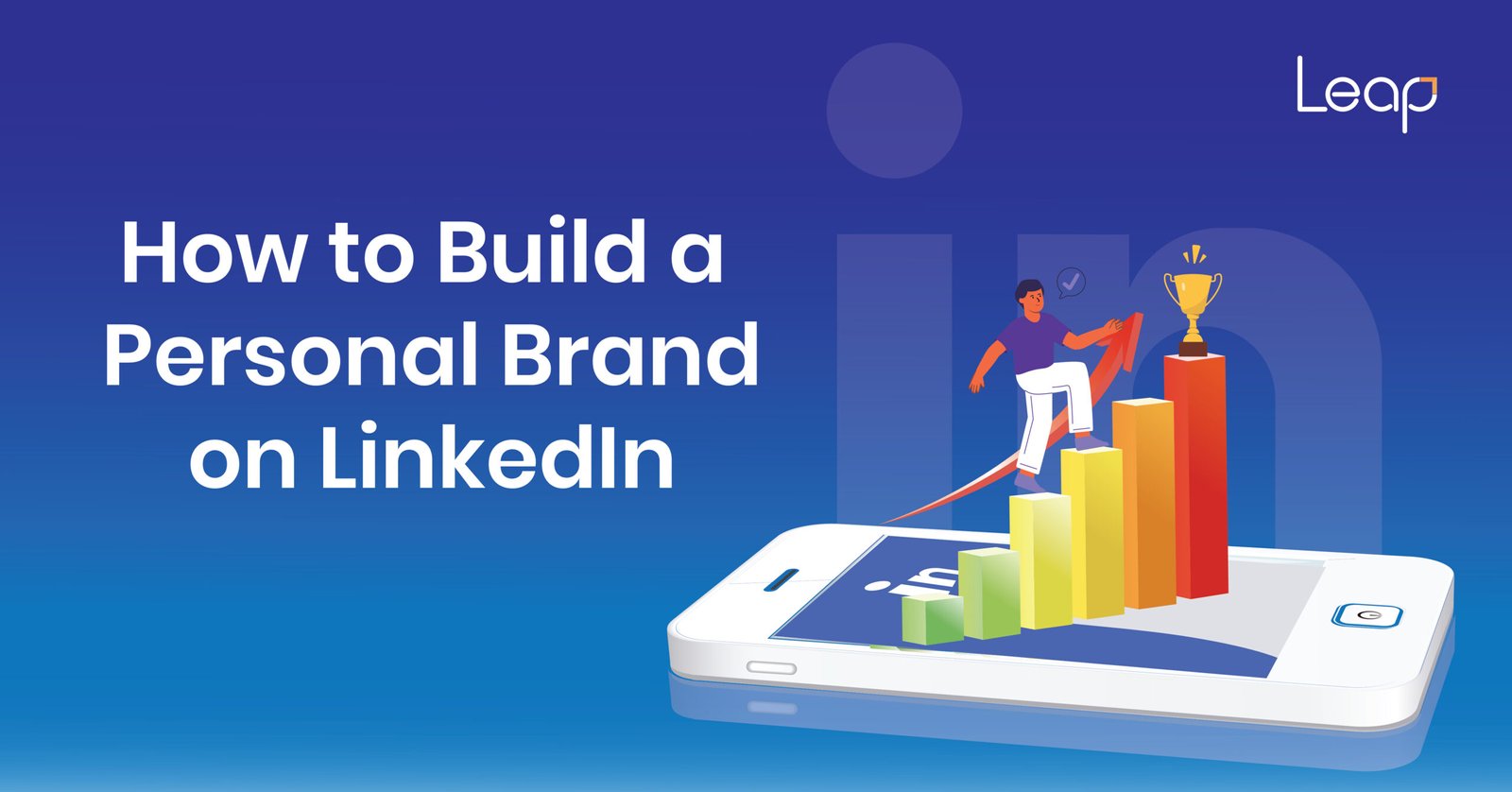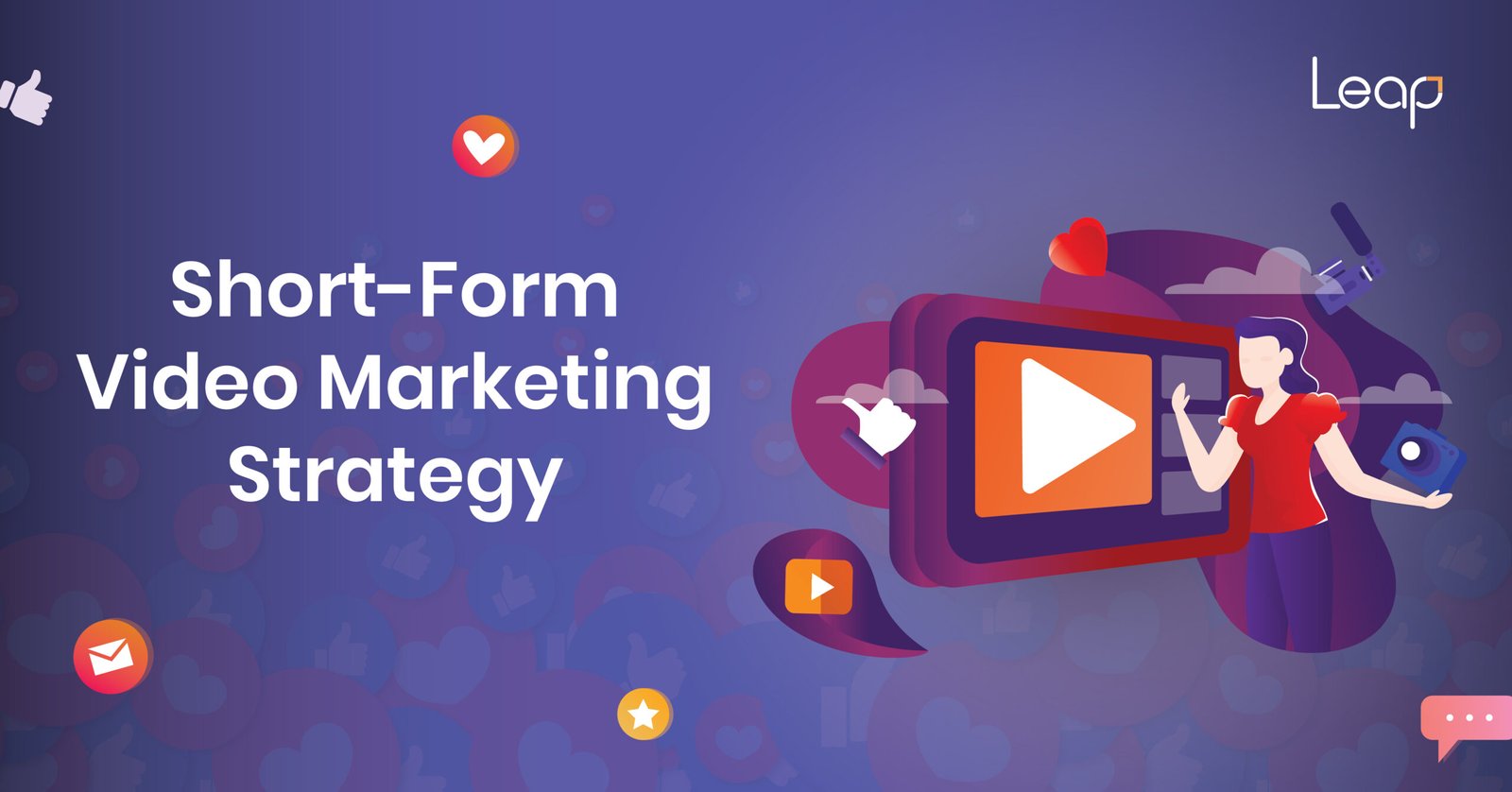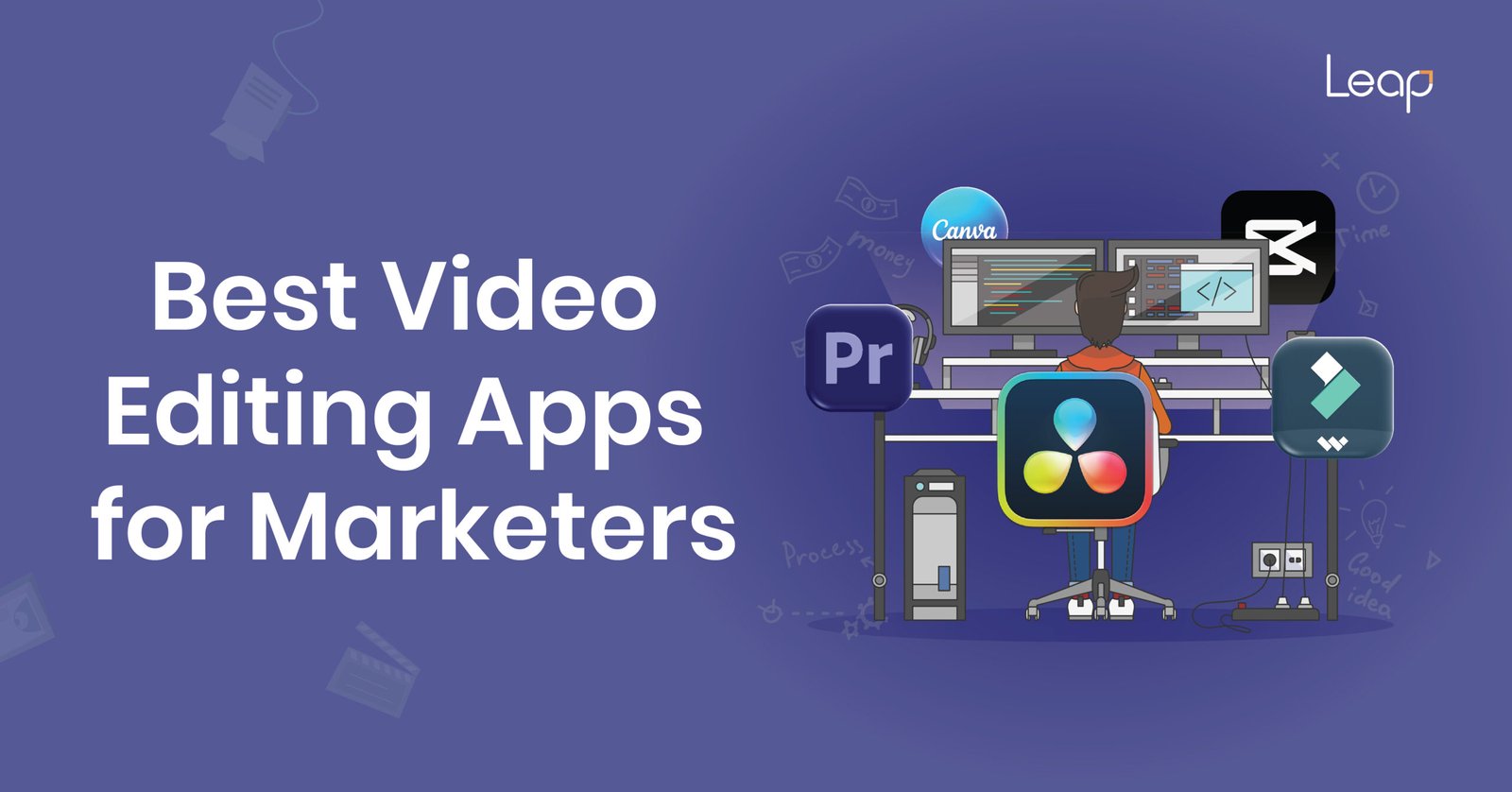Master your online marketing approach, generate leads, and elevate your sales to new heights! Uncover the potential of a digital marketing funnel and learn how to construct one in this comprehensive guide.
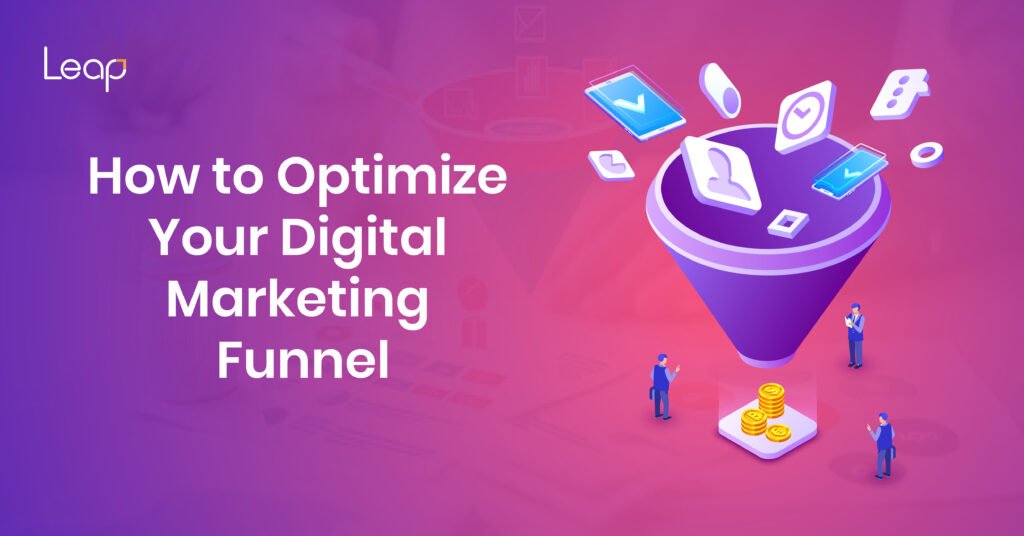
Did you know that 79% of marketing leads do not result in sales? This represents a significant waste of both time and resources for companies aiming to increase their revenue.
Avoid repeating the same errors. Ensure your efforts are effective and lead to conversions by utilizing a digital marketing funnel.
But how can you develop a functional digital marketing funnel? Additionally, how can you assess its success?
Prepare yourself for a transformative framework. I will guide you on how to lead your prospects from initial awareness to steadfast brand loyalty.
Learn everything essential about the digital marketing sales funnel, which includes:
- What constitutes a digital marketing funnel and its importance
- The various stages of the digital marketing funnel and the appropriate actions to take at each stage
- The optimal practices for creating and refining your digital marketing funnel
- The crucial metrics and KPIs to monitor and enhance your marketing effectiveness
By the conclusion, you will emerge as a marketing champion equipped with a practical strategy to increase traffic and conversions for your business.
Are you prepared to begin? Let us proceed!
What Is a Digital Marketing Funnel?
A digital marketing funnel represents a strategy employed by businesses to transform prospects into dedicated customers via a systematic buying journey. A standard sales funnel consists of multiple stages, ranging from initial awareness to ultimate conversion.
The stages of the funnel may differ based on your strategy. Nevertheless, the most prevalent customer journeys include:
- Awareness
- Interest
- Desire
- Action
- Retention
An efficient digital marketing strategy enables you to draw in, engage, and convert your target customers.
This approach is a validated method for increasing leads, sales, and revenue for your business.
The Advantages of a Marketing Funnel (And Their Significance)
68% of companies have not yet identified or attempted to measure their sales funnel. This is concerning!
Differentiate yourself from the majority of businesses that are missing out on these significant advantages:
- Enhanced ROI: By concentrating on customers’ needs at different stages, you can allocate resources more effectively. This approach minimizes marketing expenses and enhances ROI.
- Boosts Your Conversion Rates and Revenue: A well-structured digital marketing funnel emphasizes crucial conversion points. By optimizing these stages, you can improve lead generation and customer acquisition.
- Enhances Customer Retention and Satisfaction: The user experience extends beyond the purchase. A funnel fosters long-term customer relationships by delivering valuable content post-sale. Consequently, you will secure repeat purchases and cultivate customer loyalty.
- Targeted and Personalized Marketing: Develop content that resonates with your audience throughout the buyer’s journey. Equipped with insights, you can customize messages to enhance engagement and drive conversions.
- Qualified Leads: Methodically guide leads through the stages of the funnel. Evaluate their interest level and readiness to purchase. Then, focus on a prospective customer who is prepared to buy.
- Transform Potential Consumers into Loyal Followers: Convert casual observers into committed buyers. A well-organized funnel turns prospects into brand advocates and loyal customers.
- Master Upselling and Cross-Selling: Examine customer preferences, previous purchases, and engagement trends. Then, customize your offers to increase sales.
The Three Primary Stages of the Digital Marketing Funnel
A conversion funnel progresses through three essential stages:
- Top stage: The phase where awareness flourishes
- Middle stage: The phase where connections strengthen
- Bottom stage: The phase where conversions soar

A conversion funnel progresses through three essential stages:
- Top stage: The phase where awareness flourishes
- Middle stage: The phase where connections strengthen
- Bottom stage: The phase where conversions soar
Each stage of the funnel signifies a distinct phase in the buyer’s journey. Each phase necessitates specific strategies to effectively engage and direct prospects towards conversion.
Let us explore each stage in greater detail.
Top of Funnel Marketing
Top-of-funnel marketing represents the initial awareness phase in which prospective customers first encounter your brand or product. The objective is to capture attention, stimulate interest, and enhance brand recognition.
For instance, offer valuable insights that address inquiries or resolve issues. The focus is on establishing a favorable first impression.
Middle of Funnel Marketing
Middle-of-funnel marketing represents the consideration phase during which potential customers assess your products in comparison to those of your competitors. It is your responsibility to deliver more comprehensive and compelling content that highlights your distinct value proposition.
The objective is to build trust and steer them nearer to a purchasing decision.
Bottom of Funnel Marketing
Bottom-of-funnel marketing represents the decision-making phase in which leads are prepared to transition into customers. At this stage, your emphasis should be on presenting a persuasive argument for your product or service.
For instance, you might provide incentives, testimonials, case studies, or free trials. These strategies facilitate the crucial final conversion step.
Why a Marketing Funnel Is Important for Your Business
A digital marketing funnel strategy enhances marketing efficiency, addresses challenges, and offers data-driven insights. Consequently, your business is likely to experience growth and achieve long-term success.
According to 48% of companies, enhancing the efficiency of their sales funnel is a primary sales objective. Here are the reasons you should prioritize this as well:
Enhances Marketing Efficiency: Attain greater efficiency in overall operations, conserving time and resources. Make well-informed decisions, refine audience segmentation, enhance customer journey mapping, and utilize automation for scalable lead nurturing.
Improved Lead Management: Companies frequently face difficulties with disjointed marketing efforts, inconsistent lead management, and a lack of clarity regarding customer acquisition. A funnel offers structure and guidance. Consequently, you can streamline marketing activities and concentrate on effectively converting leads.
Mitigates Business Challenges: Decrease low conversion rates, squandered marketing budgets, and ineffective lead follow-up. Alleviate these issues by targeting the appropriate audience with personalized and relevant content.
Identifies Gaps in Your Sales Process: Utilizing a funnel allows you to pinpoint where a potential customer exits the process. This understanding simplifies the identification of areas requiring enhancement.
Enhances Understanding of Your Target Audience: Mapping the customer journey enables you to grasp their needs, pain points, and preferences, allowing for the development of precisely targeted marketing strategies.
Establishes Trust and Credibility: Position your business as a trustworthy industry leader. Provide valuable content, address pain points, and ensure a seamless user experience.
Facilitates Data-Driven Decision Making: Monitor essential metrics such as conversion rates, customer acquisition costs, and engagement rates. Subsequently, make informed decisions for improvement.
A digital marketing funnel is essential for strategic, customer-focused, and results-oriented marketing.
The 4 Main Digital Marketing Funnel Models
I have included a substantial amount of information. However, there is still additional funnel excitement to discuss!
Digital marketing funnels are available in different models, each with its own distinct approaches and stages.
Let us examine four well-known funnel models and how they can be utilized to promote business growth.
1. The AIDA Marketing Funnel
The AIDA funnel presents a traditional but efficient framework for outlining the customer journey.
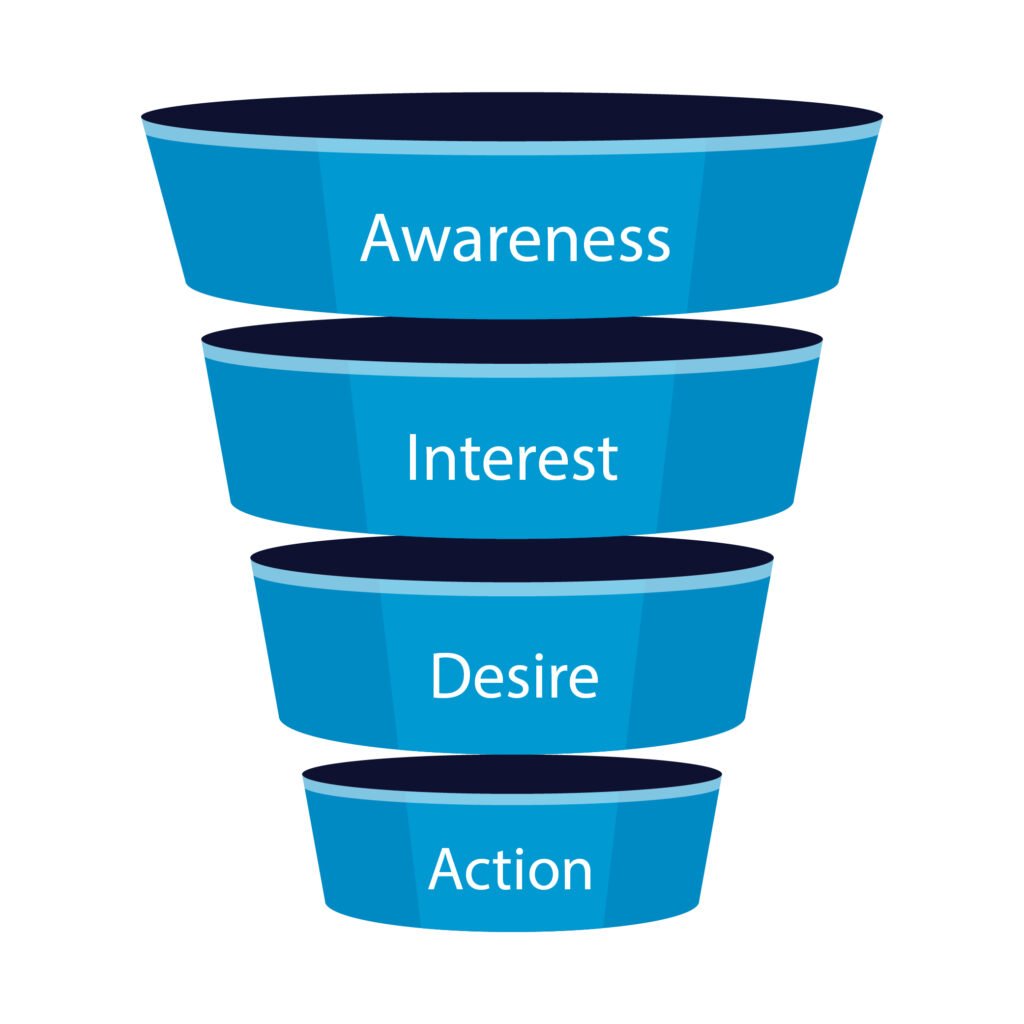
Let us analyze its four fundamental stages:
Awareness Stage: The objective is to attract attention. Utilize SEO or social media advertisements to engage your audience and enhance brand visibility.
Interest Stage: Having captured their attention, the next step is to stimulate their interest. Provide valuable content that addresses your audience’s needs, challenges, and inquiries.
Desire/Consideration Stage: At this point, it is essential to ignite desire. Emphasize your unique selling propositions and advantages through methods such as testimonials or product demonstrations.
Action Stage: Ultimately, encourage your audience to take action. Simplify the process of purchasing or signing up. For instance, present compelling incentives such as discounts or free trials.
Note:
According to research and insights from other marketers, a conventional marketing funnel is less effective compared to contemporary funnels.
Consumer behavior has transformed, rendering traditional linear funnels ineffective for the following reasons:
Non-linear customer journeys
Fragmented attention
Evolving consumer behavior
Absence of personalization
The swift advancement of the digital landscape
2. The Hourglass Marketing Funnel
The hourglass funnel extends beyond the initial transaction. It highlights the importance of customer retention and advocacy.
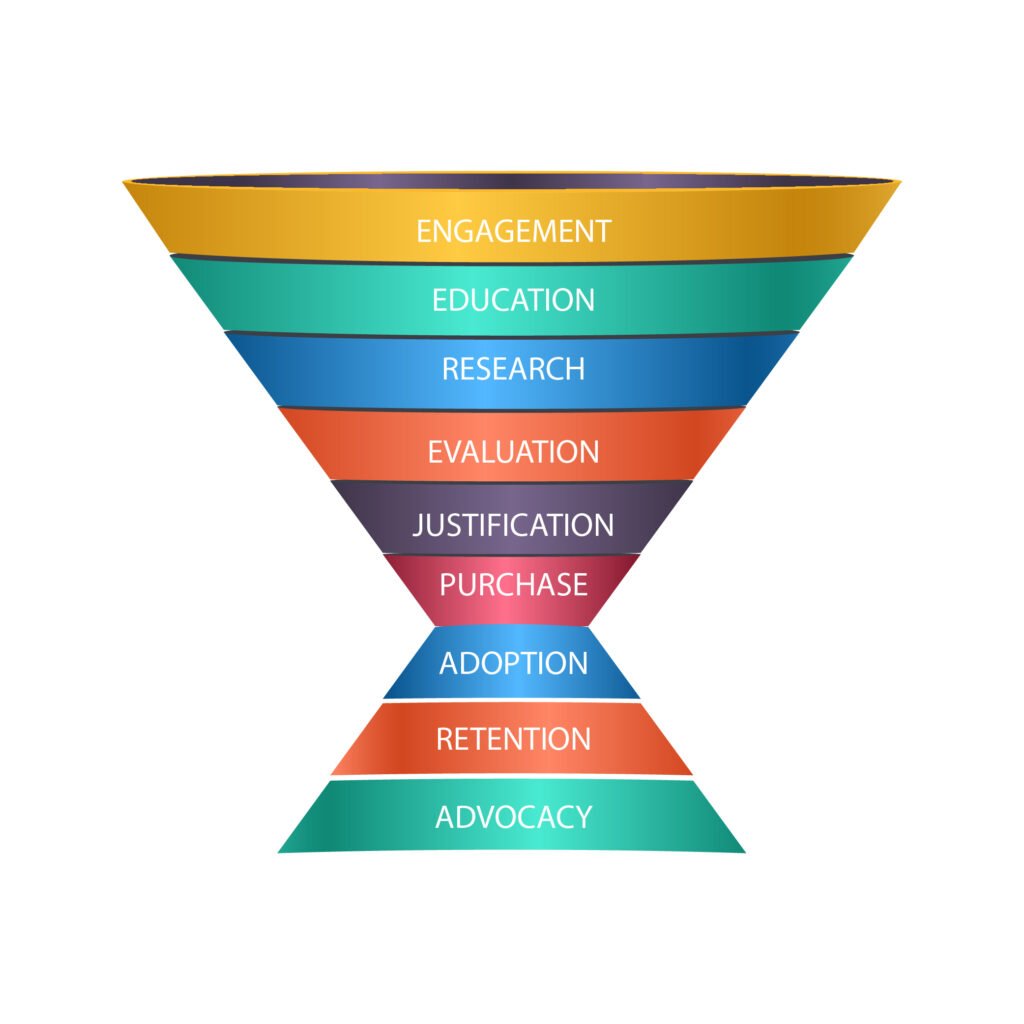
Here’s how prospective customers navigate through the hourglass model:
Engagement: The initial phase captures your audience’s attention and fosters brand awareness through targeted marketing strategies.
Education: Generate interest by providing valuable insights regarding your product or service. Highlight how it addresses their challenges.
Research: Prospective clients look for more comprehensive information about your product or service, such as features, reviews, and comparisons.
Evaluation: Prospects assess your product or service against alternatives, considering aspects like pricing, features, and advantages.
Justification: At this stage, potential customers justify their intended purchase, seeking final confirmation before proceeding.
Purchase: An easy and friendly checkout experience can finalize the transaction. Congratulations, your efforts have resulted in a sale!
Adoption: After the purchase, your customer starts utilizing the product or service, potentially finding it valuable and enjoyable.
Retention: Content customers continue to engage with your product or service, becoming repeat buyers.
Expansion: Satisfied customers may choose to upgrade or acquire additional products or services, thereby broadening their relationship with you.
Advocacy: In this concluding phase, pleased customers transform into brand advocates, sharing their positive experiences about your product or service with others.
3. The Looping Marketing Funnel
All these funnels are driving me crazy.
In contrast to conventional linear funnels, the “Loyalty Loop” highlights the repetitive aspect of the customer journey.
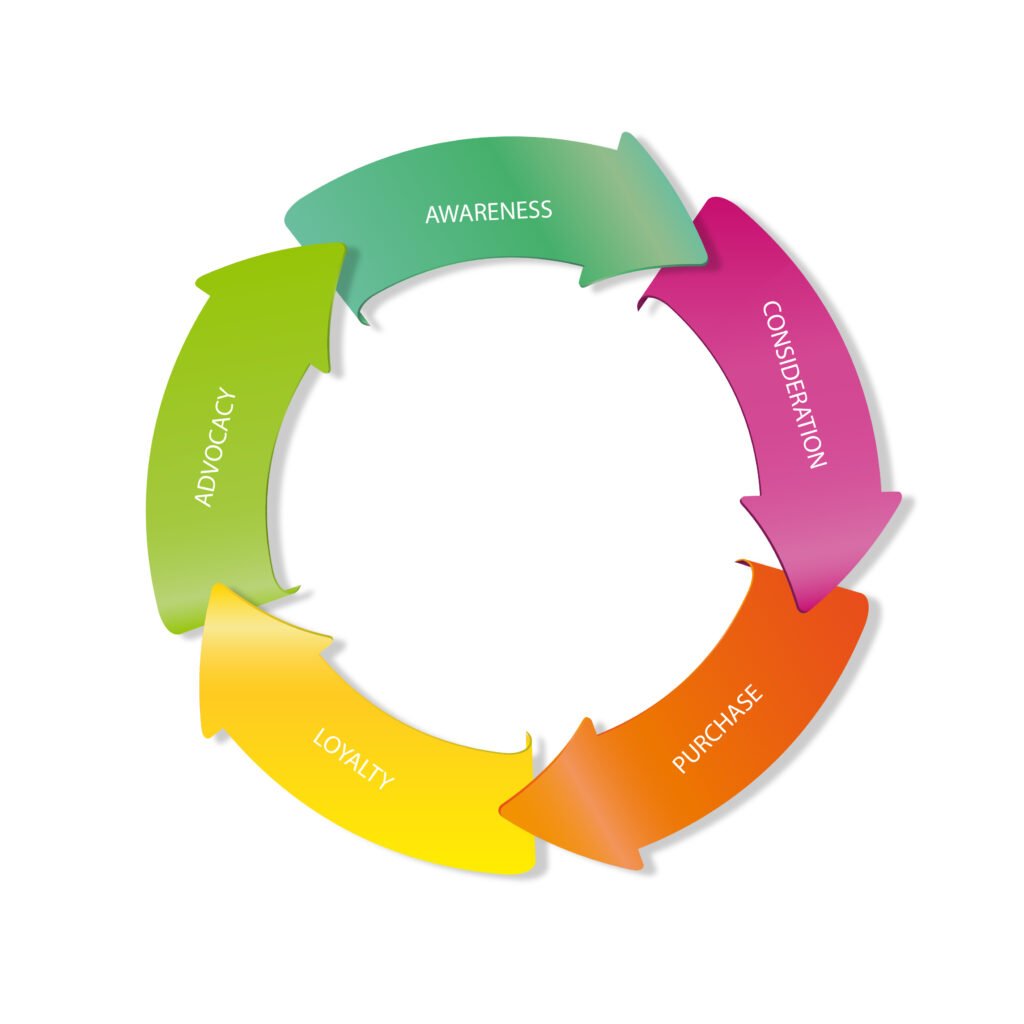
Let us examine growth loops in greater detail:
Awareness: A prospective customer recognizes a problem and looks for information.
Consideration: Potential clients evaluate your products or services in relation to their requirements and the alternatives present in the market.
Purchase: The moment when customers decide to acquire your product or service.
Loyalty: Current customers persist in using your product or service and cultivate a preference for your brand.
Advocacy: Content customers transform into your brand advocates, promoting your offerings to others. Consequently, new sales are generated!
4. The Marketing Funnel of Micro-Moments
Last funnel, I assure you! Perhaps
The micro-moments funnel focuses on key instances that affect a potential customer’s buying decision.
Here is an overview of each micro-moment:
I-Want-To-Know Moments: When potential customers investigate and gather information but have not yet entered the buying phase.
I-Want-To-Go Moments: Shoppers are searching for a nearby business or contemplating the purchase of a product from a local retailer.
I-Want-To-Do Moments: When a potential customer looks for guidance on how to perform a task or achieve a specific objective.
I-Want-To-Buy Moments: The pivotal moment when consumers are prepared to make a purchase and require assistance in determining what or how to buy.
Top 10 Digital Marketing Funnel Strategies
Enhancing your digital marketing strategy requires more than just one approach. It necessitates a combination of established techniques customized to align with your audience’s journey.
Let us examine the ten most effective strategies to optimize your digital marketing funnel for maximum reach and conversion.
SEO (Search Engine Optimization): SEO improves your online presence by refining your website’s content and design for both search engines and users.
B2B Marketing Funnel: Emphasize long-term relationships and the intricate decision-making processes typical in business-to-business interactions.
B2C Marketing Funnel: Draw in individual consumers by highlighting personal advantages, convenience, and emotional ties.
Content Marketing Funnel: Engage and direct your audience by providing useful, relevant content at every stage of their purchasing journey.
Video Marketing Funnel: Utilize video content to illustrate your product’s advantages and captivate your audience.
Email Marketing Funnel: Develop personalized email campaigns to lead your audience from awareness to conversion.
Inbound Marketing Funnel: Attract customers through valuable content and experiences tailored to them, as opposed to conventional outward promotions.
Click Funnel Marketing: Implement a series of web pages to direct visitors towards a specific action, such as purchasing a product or service.
Advertising Funnel Marketing: Use targeted advertisements to generate awareness, interest, and conversion.
Social Media Marketing Funnel: Capitalize on social media platforms to engage your audience and cultivate relationships that result in sales.
How to Create a Marketing Funnel (10 Easy Steps)
Ultimately, let us proceed to create the desired product! Are you prepared to achieve mastery in marketing? It’s as simple as enjoying a slice of funnel cake.
Follow these ten straightforward steps to construct a successful digital marketing funnel. Prepare yourself to elevate your conversion rates and expand your business.
1. Identify Your Target Audience
Recognize your ideal customers. Comprehend their needs, interests, and behavioral patterns. Subsequently, develop content and offers that resonate with them.
To explore further into identifying your target audience:
- Conduct market research: Employ surveys, interviews, or focus groups. Collect insights regarding your audience’s needs and preferences.
- Analyze customer data: Examine purchase histories and customer feedback. Uncover buying patterns and sentiments.
- Create buyer personas: Condense your audience’s demographics, motivations, and pain points into specific personas for targeted marketing.
- Monitor your competitors: Reveal their target audience and pinpoint untapped market opportunities.
- Test and refine: As your business expands, revisit your marketing strategies and make adjustments as necessary.
2. Establish Clear Marketing Objectives
Determine what you aim to accomplish with your digital marketing funnel. Objectives can vary from enhancing brand visibility to increasing sales.
For clarity on establishing marketing objectives:
- Utilize SMART objectives: Ensure your objectives are Specific, Measurable, Achievable, Relevant, and Time-bound.
- Align with business aims: Your marketing objectives should complement the overarching aims of your business.
- Decompose large objectives: Divide substantial objectives into smaller, manageable tasks or milestones.
- Establish key performance indicators (KPIs): Identify metrics to evaluate the success of each objective.
- Consistently review and modify: Adjust objectives based on market conditions, competition, or your business performance.
3. Generate Awareness Through Marketing Channels
Use platforms such as blogs, social media, or paid advertisements to connect with your target audience. The objective is to raise awareness about your brand or product.
To enhance your brand awareness:
- Optimize for SEO: Focus on keywords that are pertinent to your audience to boost organic search rankings and visibility.
- Leverage influencers: Collaborate with influencers within your industry to extend your reach.
- Utilize various formats: Incorporate content types such as videos, infographics, and podcasts to cater to a variety of audience preferences.
- Engage proactively: Respond to comments, take part in discussions, and maintain open lines of communication.
- Monitor and analyze: Employ analytics tools to identify the most effective channels for directing your efforts.
4. Increase Traffic to Your Website or Landing Page
Implement SEO techniques, initiate PPC campaigns, or utilize social media. Attract interested users to your site or a designated landing page.
To enhance traffic to your website or landing page:
- Develop captivating content: Refresh your website with new, high-quality content to engage users and boost organic traffic.
- Mobile optimization: Ensure your site is optimized for mobile devices, as a growing number of users browse on their phones.
- Execute targeted PPC advertisements: Design ads that resonate with your specific audience and guide them to pertinent landing pages.
- Utilize social sharing: Facilitate the sharing of your content on social media to draw in more visitors.
- Incorporate Call-to-Action (CTAs): Guide users with explicit calls-to-action such as “Read More” or “Sign Up Free.”
5. Capture Qualified Leads
Offer complimentary resources, webinars, or newsletters in exchange for contact details to generate a qualified lead. These leads are typically interested in your offerings.
To improve your lead capture strategies:
- Utilize lead capture forms: Position these strategically on your website, particularly on pages with high traffic.
- Customize your approach: Adapt your content, offers, and calls-to-action to align with your audience’s preferences.
- Test gated content: Provide materials such as ebooks or whitepapers in exchange for contact information.
- Employ chatbots: Utilize them to interact with visitors and collect information efficiently.
- Conduct A/B testing: Experiment with factors like form length and CTA phrasing to enhance lead capture rates.
6. Cultivate Your New Leads
Engage potential customers with valuable content and consistent communication. Gradually guide them towards making a purchasing decision.
To improve your lead nurturing strategies:
- Consider email drip campaigns: Dispatch scheduled, relevant content over time to sustain interest and foster trust.
- Customize communications: Adapt content to address individual needs or interests based on lead behavior and data.
- Provide educational content: Offer guides, blog posts, or webinars to assist leads in understanding your product or service.
- Establish retargeting campaigns: These serve to remind leads about your offering and motivate them to take action.
- Observe lead behavior: Modify your strategy based on how leads engage with your content or website.
7. Transform Leads into Customers
leads of the value of your product and convert them into customers.
To improve lead conversion strategies:
- Offer exclusive deals: Discounts or additional content can motivate leads to become customers.
- Utilize trust indicators: Show award badges, certificates, credentials, or media mentions to foster trust.
- Capitalize on social proof: Highlight user-generated content or reviews to demonstrate customer satisfaction.
- Enhance conversion pathways: Ensure straightforward navigation and a smooth user experience on your website.
- Customize communications: Adapt your messages according to customer behaviors and preferences. This enhances the relevance and effectiveness of your marketing.
8. Finalize the Transaction
Streamline the checkout procedure. Provide secure payment options and outstanding customer support to guarantee a seamless buying experience.
For instance, consider implementing the following strategies to enhance the purchasing process:
- Decrease obstacles: Limit the number of steps required to finalize a purchase.
- Present multiple payment alternatives: Appeal to a diverse customer demographic.
- Integrate live chat: Respond to customer inquiries instantly.
- Ensure clear pricing: Eliminate hidden fees to maintain customer confidence.
- Emphasize security measures: Reassure customers that their information is protected.
9. Enhance Customer Retention and Upselling
Offer pertinent product suggestions, loyalty initiatives, and exceptional after-sales support. These strategies enhance customer retention and optimize revenue.
- Customize upsell proposals: Tailor recommendations based on previous purchases or browsing behavior.
- Initiate a referral initiative: Motivate customers to refer their acquaintances.
- Consistent follow-ups: Reach out to customers after their purchase.
- Implement renewal notifications: Avoid subscription lapses by alerting customers.
- Emphasize customer feedback: Leverage it to enhance product or service quality.
10. Evaluate and Enhance the Performance of Your Funnel
Regularly assess the performance of your funnel by analyzing analytics and key performance indicators (KPIs). Subsequently, utilize the data to implement essential modifications aimed at optimizing conversion rates and overall efficiency.
- Identify essential metrics: Establish what success signifies for your funnel.
- Utilize heat maps: Illustrate how users engage with your pages.
- Conduct customer surveys: Acquire direct insights into their experiences.
- Observe industry trends: Remain relevant and competitive.
- Test and refine: Continuously adjust your strategies based on data insights.
Digital Marketing Funnel vs Sales Funnel
Digital marketing funnels and sales funnels are essential elements of a marketing strategy. While they share similarities, they concentrate on distinct phases of the buyer’s journey.
Digital Marketing Funnel: This approach draws in, engages, and converts online visitors. It begins with content marketing to create awareness and concludes with the conversion of interested leads into customers.
Sales Funnel: This approach focuses on the later stages of the buyer’s journey, such as converting leads into sales. It encompasses strategies like nurturing leads, addressing objections, and finalizing deals.


